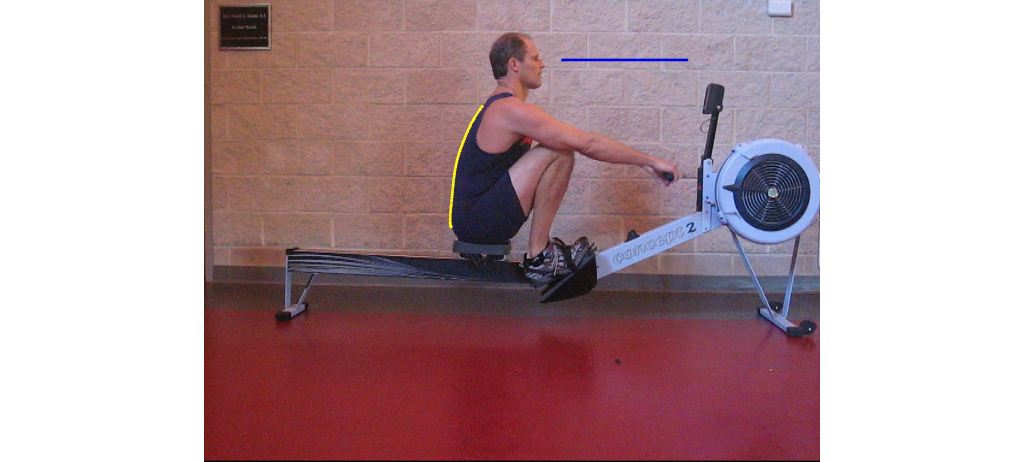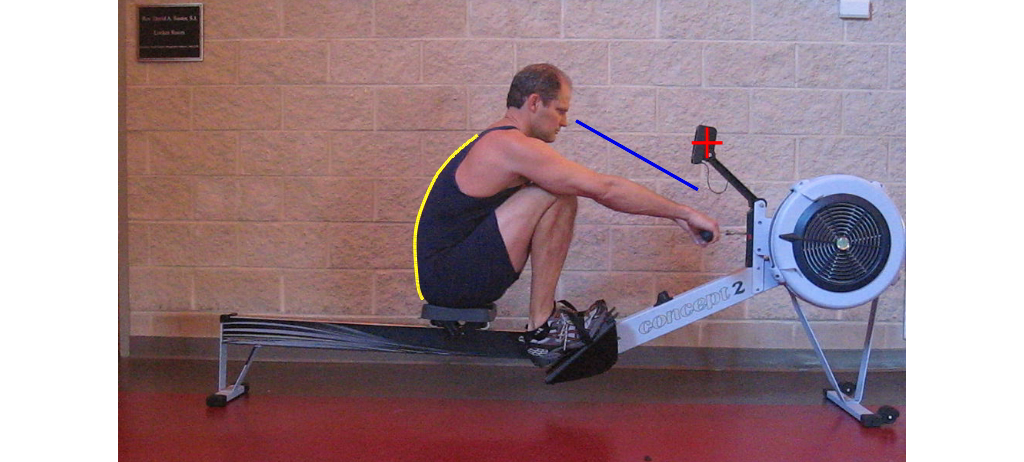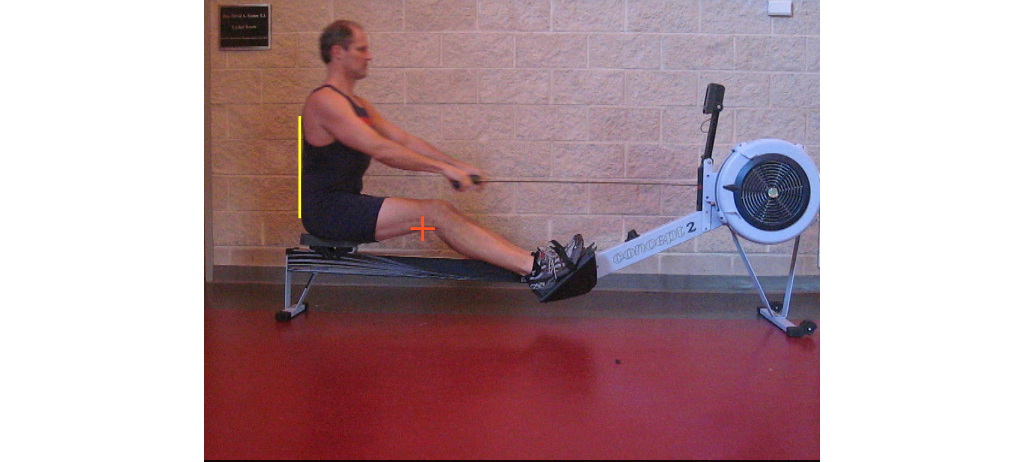Rowing News – Fitness Column February 2010
February 9, 2010
Written by Coach Kaehler:
Are you stuck on the ergometer now that winter has set in? For those of you who must train indoors this winter, now is a great time to work on proper body posture while cranking out the meters on the erg. Rowing with proper body posture, or biomechanics, through the winter training season can help to reinforce good habits now, and better prepare you for a solid on- the-water season once the ice melts. One big advantage of using an ergometer is that it allows you to get instant feedback on your body posture and technique during the rowing stroke. An easy way to quickly assess your posture and rowing technique is to place mirrors in front and alongside the rowing machine, or by using a video camera to record your rowing stroke. Either method allows you to get quick feedback and make the necessary adjustments to improve your rowing posture and technique. Although ideal rowing posture varies among coaches, most would agree on keeping your spine in an extended, upright position (Figure 1, yellow line) rather than in a C- shape (Figure 2, yellow line), at the catch, during the drive, and on the recovery of the rowing stroke. Your spine connects the power from your legs through the arms onto the handle, much like a transmission in an automobile. The spine, when remaining stable, acts as a harness to transmit all of the force from the legs during the first half of the drive. During the second half of the drive, the spine begins to generate its own force along with the arms to help complete a powerful stroke. A solid rowing posture improves your ability to maintain effective body suspension on the drive, leading to a smoother and more rhythmic recovery. Improving your rowing posture requires specific attention to several areas, including proper head position, hamstring flexibility and solid trunk strength.
Head and neck position are important because their position helps dictate what the rest of the spine will do. At the catch, it is ideal for your head to be looking forward or slightly up (Figure 2, blue line) putting your neck in an extended position, helping to promote a straight spine as described above. When your head is looking down towards the foot stretchers or your legs your neck tends to be in a flexed position (Figure 2, head position) which may lead to a C shapes spine. (Figure 2, yellow line)
In addition to proper head and neck alignment, your hamstring flexibility is an important factor in helping promote effective rowing posture. Lack of mobility in the hamstrings often leads to more rounding in the low back on the recovery and at the catch. Your aim is to get your body over on the recovery with your low and mid spine in the straightest position possible. Hamstring mobility can be improved right on the erg by pivoting the body over at the recovery with the low and mid spine kept in a firm extended position (Figure 3, yellow line), until tension is felt in the back of the knees (Figure 3, red marker).
While flexibility and head posture are both important so is good trunk strength which is necessary to be able to maintain this solid spine posture. One easy method for developing better trunk strength while maintaining a straight back position is to do one or both of the following drills “legs only” and “legs and arms only ”. Keeping the trunk stable requires good strength especially when these two drills are done with moderate power. Again, using mirrors here makes it easy for you to assess your trunk position quickly to ensure you are doing these strength drills correctly.
As the ice begins to melt and you are getting back in the boat, your new rowing posture will not only improve your power and performance, it will make all those meters on the erg even more valuable when you finally get your blade in the water. Looking forward to that spring thaw!!
Figure 1
Figure 2
Figure 3
Comments
One Response to “Rowing News – Fitness Column February 2010”
Got something to say?




When pushing off the foot stretchers on the erg, are you :
1- Pushing off with the balls of the feet and toes and rolling
back onto the heels?
or
2- Maintain pushing off with a flat foot ?
Also Level of the handle:
1- Below the breast area at the finish?
or
1- Gliding it up over the breast at the finish?
Thank you!